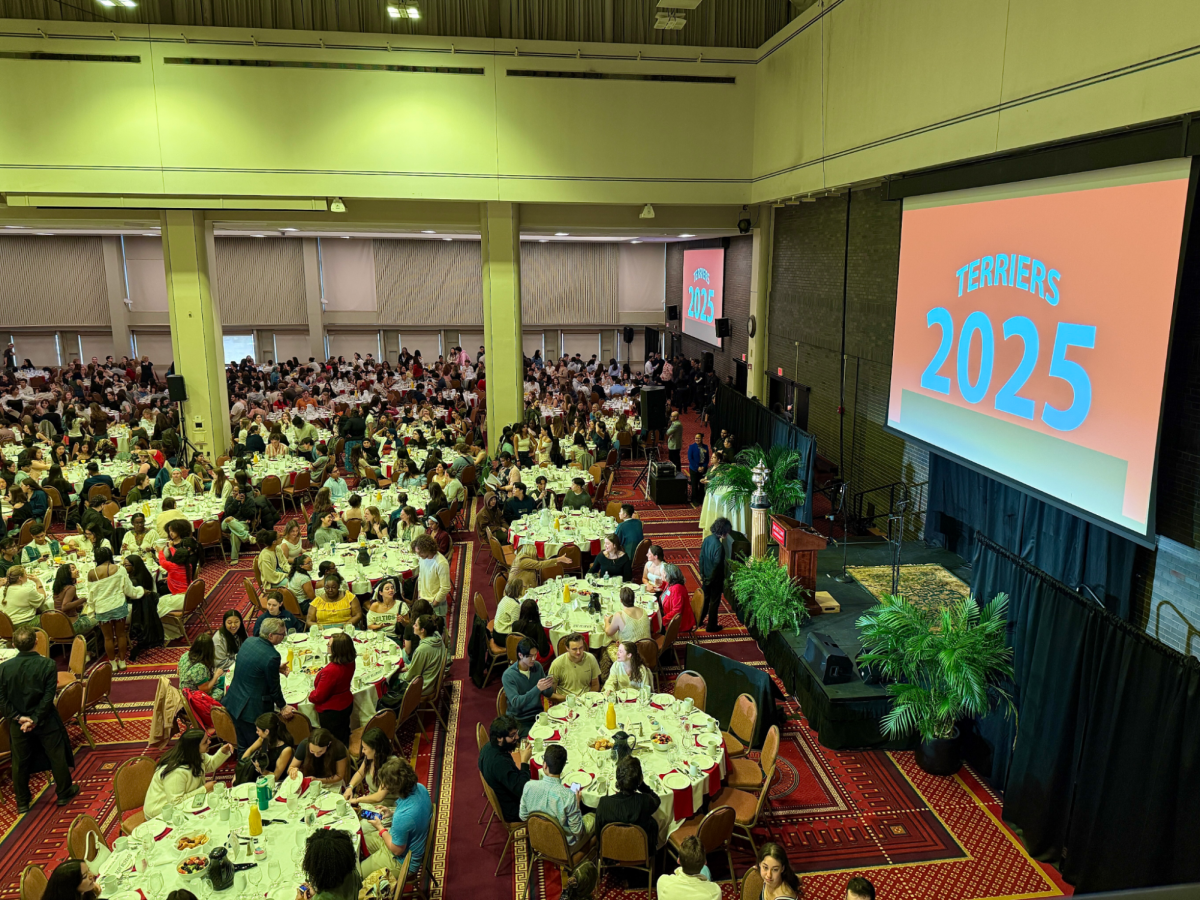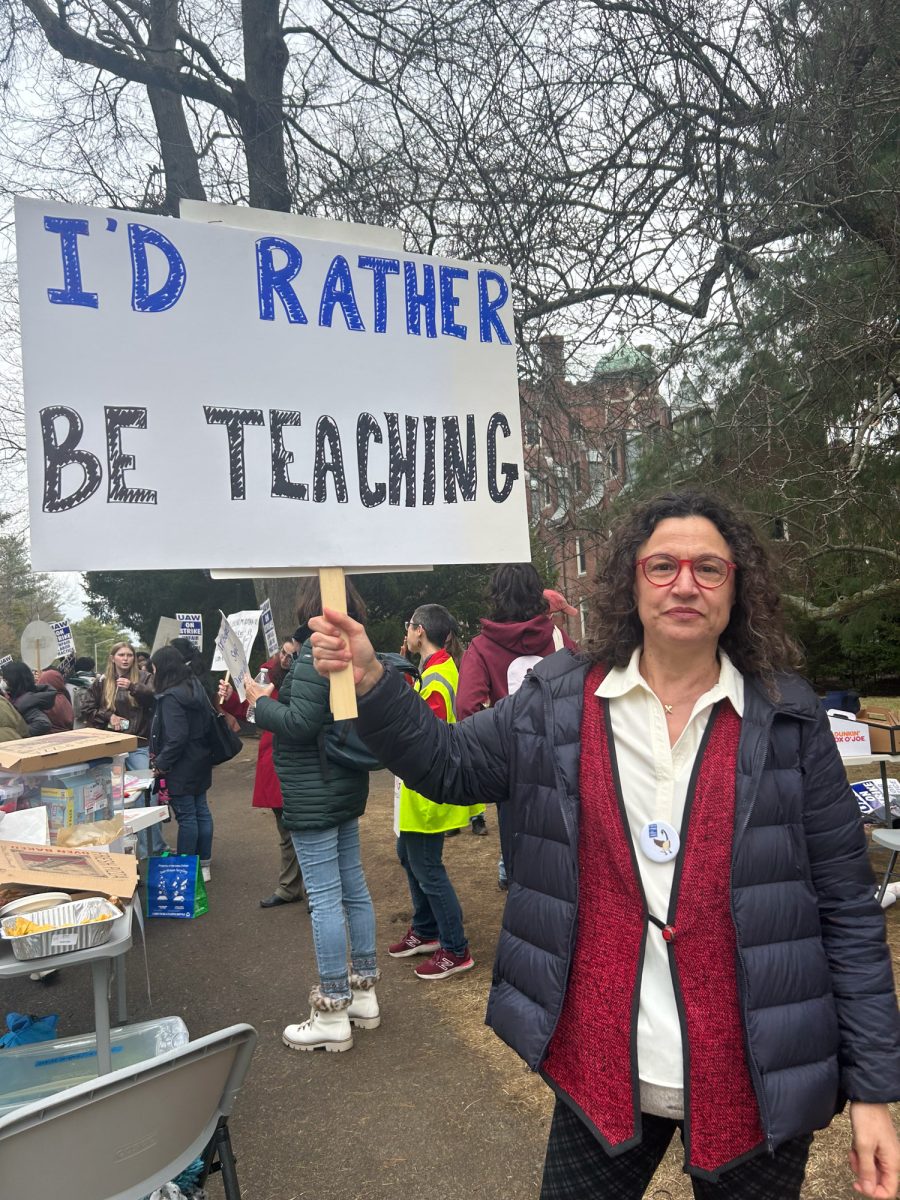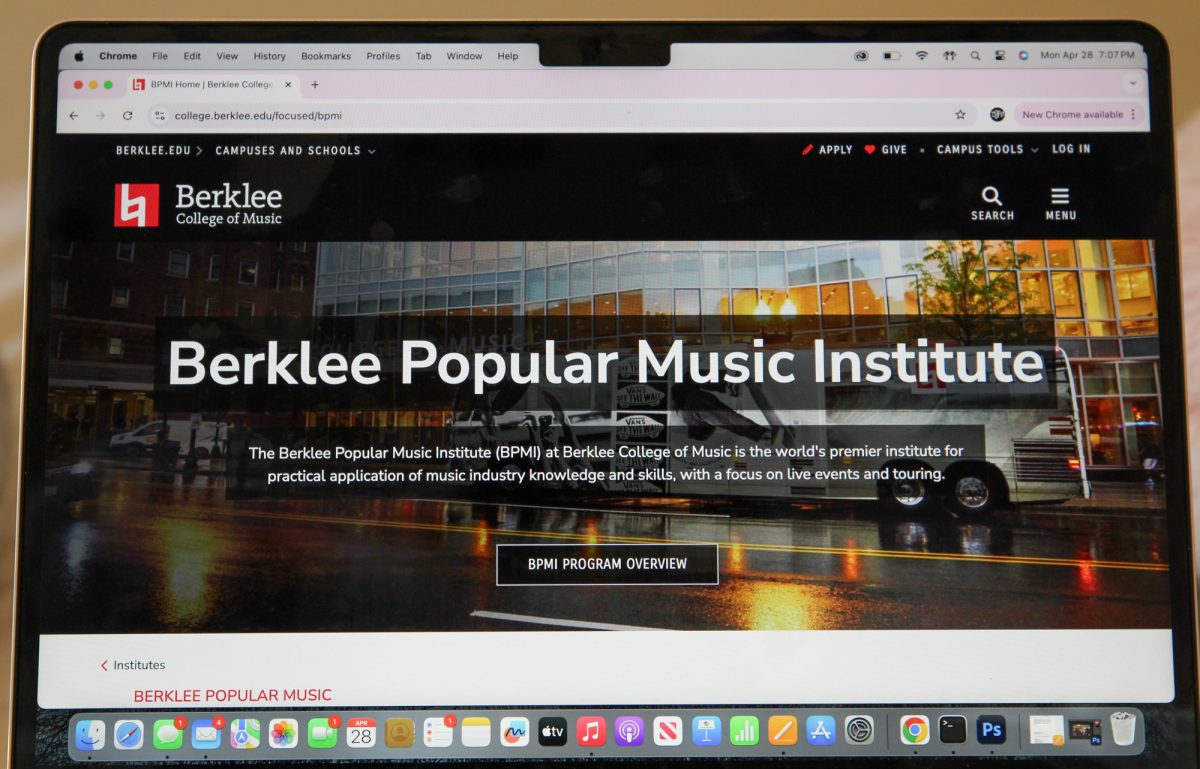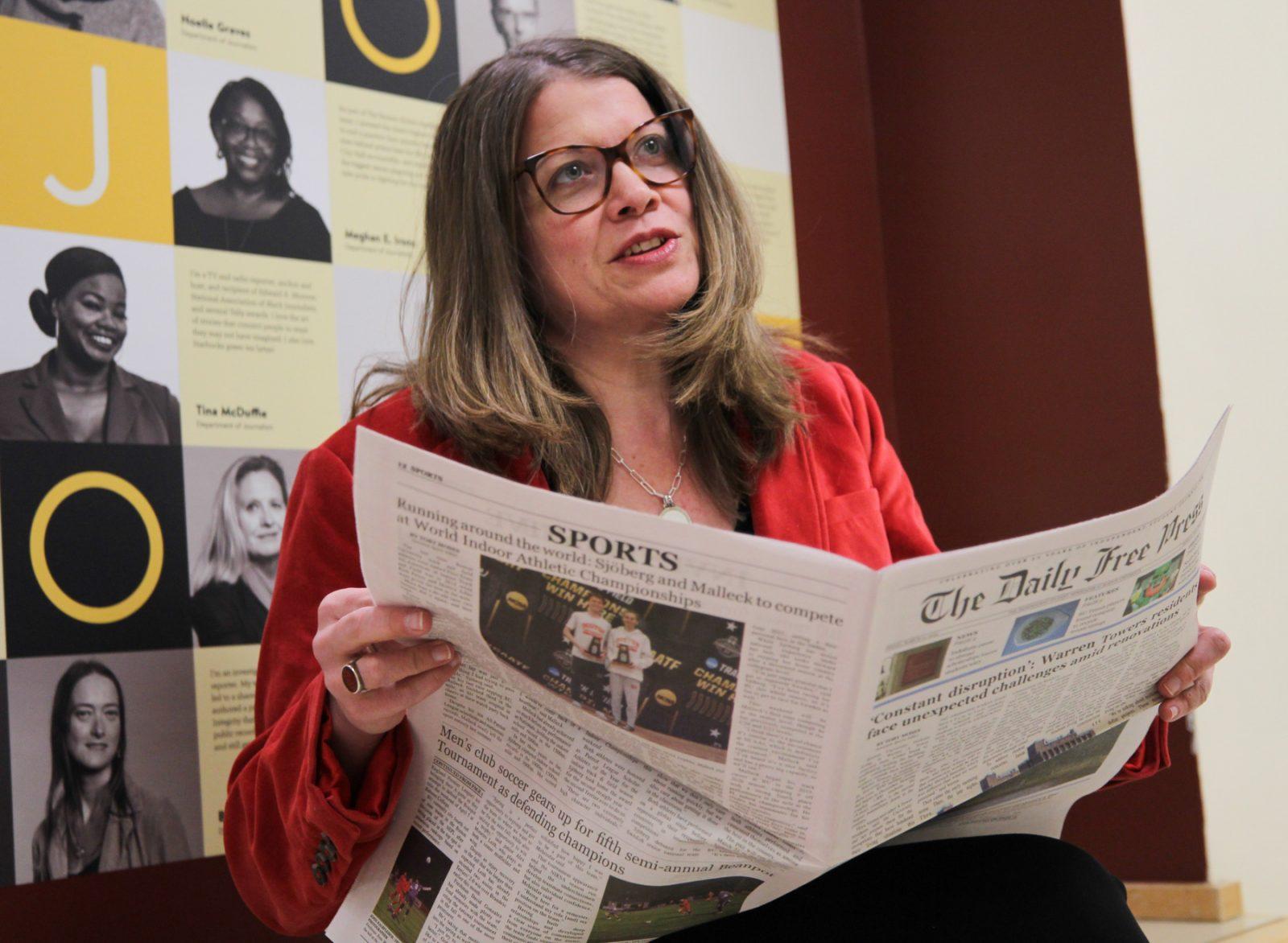The Daily Free Press celebrates its 40th anniversary this spring. We’ll be commemorating the occasion throughout the semester with stories and features about the past, present and future of your independent student newspaper.
Razor blades and wax aren’t words that usually come to mind when reading a newspaper. But former Daily Free Press Editor-In-Chief John Madden (College of Communication ’91) said that when it came to putting together the paper in 1990, razor blades and wax were “what it was all about.”
Publishing software was still several years away. There were computers in the office, but their only capability at the time was word processing, Madden said. After all the stories were typed out and photographs were developed, the editors would print out the content on a laser printer, cut it out with the razor blades and paste it onto cardboard slots.
“We were literally putting the paper together with our bare hands every night,” he said. “You learn a lot about a person spending hours with them cutting with razor blades and getting wax out of your hair.”
Tammy Audi (COM ’93), who was editor-in-chief two years after Madden, also had vivid memories of the sticky stuff and how frustrating the layout process was.
“We spent so much more time just trying to get the mundane tasks of actually getting the words on the page and making sure the words lined up and making sure it was straight than on stories and what we liked to do,” she said.”It was a testament to how much we loved The Free Press that we put up with this crazy cut-and-paste system.”
Founding editor Charles Radin (SPC ’71) only had one computer, used for setting type, in the first Free Press office in the basement of the then-School of Public Communications.
“We would have to go into the computer with paper clips when it broke down and poke around till we could get it to work,” he said. “We were truly in the dark ages compared to anything that you’re doing now.”
Radin recalled one instance when this state-of-the-art repair system failed him. A Bay State Road brownstone across from present-day Hillel House burned to the ground one night &- and the computer wasn’t working.
“We had to type out the whole paper trying to do semi-justified columns on a typewriter, and paste it to a page,” he said. “It was a scraggly-looking paper, I’ll tell you that, but it was either that or miss the edition.”
Katie Zezima (College of Arts and Sciences ’02) presided over the Free Press’ 30th anniversary in 2000, a time when the Internet was still an emerging technology.
“It was a tool that we definitely utilized, but it was not to the extent that it is now,” she said.
Zezima said she had mixed feelings over whether the net actually made her staff into better journalists.
“On the one hand, it gives us a wealth of information at our fingertips,” she said. “But on the other hand, there’s no substitute for getting out there and reporting.”
Before journalists had BlackBerrys and Gmails to store all their contacts, there was the Rolodex, which Audi said was her “most precious possession.”
Without the Internet, Audi said, journalism was a much more physical job.
“I was always running to the phone or running to the office or jumping in the car,” she said.
No Internet also meant that finding story ideas was no longer as easy as skimming Google News.
“You developed a steady list of sources and you religiously called those people or met with them on a regular basis, sometimes every day, because that was the only way you’d get any sense of what was going on out there,” Audi said.
Though she sees the Internet as “filled with landmines,” Audi does not deny that some aspects have been incredibly beneficial to journalism.
“Look at the earthquake in Chile,” she said. “The speed of that information, not just from journalists on the ground, but the raw information we get minutes after the event &- that kind of information is vital.”
One pitfall of the Internet is the reliance journalists place on it for fact-checking, Radin said.
“People are getting less and less discriminating about the quality of their sources on the Internet,” he said. “They just check something out by looking at the first two Google hits.”
In his day, there was one man, Radin said, that kept him and his predecessors making sure they got the details in their stories right, albeit after the fact.
“[Former President John] Silber was a great fact-checker,” he said. “It wasn’t the fear of God, it was the fear of John that would keep people on their toes.”
Shannon Hines (COM ’94) was a photo editor for THE MUSE in the early “90s. Throughout her career, she has seen photography make the transition from film to digital.
She recognized the “huge” benefit of being able to upload photos quickly instead of going through the process of developing film. However, she said she still considers herself a “purist” and worries about the dangers of photo manipulation in a digital age.
“If we don’t have a negative to show you, how do we prove that this is really what we shot?” she said.
Whatever future technologies await, journalism will never replace the tried-and-tested basics, Audi said.
“There is nothing truer than talking face-to-face with another person, going to see an event with your own eyes and reporting it on the ground,” she said.















































































































